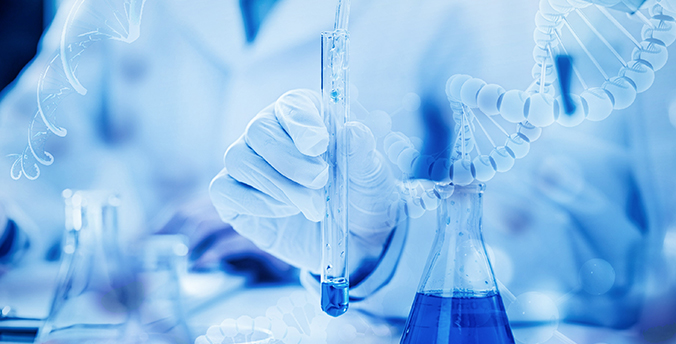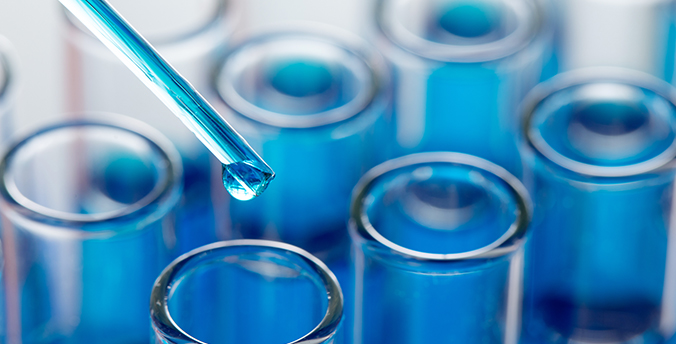With the vigorous development of pharmacogenomics, more and more studies have discovered the relationship between the effects of antipsychotic drugs and specific gene loci. The variability of drug response in different populations has been confirmed to be about 42-50% due to the genetic specificity of the population itself. In 2009, the Ministry of Science and Technology announced the launch of the 863" plan "National Genome Association Analysis and Pharmacogenomics Research for Common Critical Diseases" key project to carry out genetic research on five major diseases including mental system diseases.
In 2015, the Ministry of Health issued the "Technical Guidelines for Gene Detection of Drug Metabolizing Enzymes and Drug Targets (Trial)". The main content includes quality assurance specifications before, during and after analysis of drug metabolic enzymes and drug target genes. It provides dynamic guidance throughout the whole process for the quality assurance of drug metabolism enzymes and drug target gene detection in clinical testing laboratories, so as to realize individualized medication, improve the effectiveness and safety of drug treatment, and prevent the occurrence of serious adverse drug reactions.
Shanghai Enyuan Biotechnology has accumulated a large amount of individualized medication data through cooperation with major scientific research institutions. Combining the unique genetic information of these Han people with the current clinical drug guidelines, Shanghai Enyuan Bio has selected high-quality drug gene metabolizing enzymes and drug action target genes, and launched pharmacogenomics testing products Zhenhui Selection based on this ?。
Zhenhuixuan?'s detection genes cover pharmacokinetics, pharmacodynamics and adverse reactions (such as: cytochrome enzyme P450 superfamily, ABC transporter family, dopamine receptor, serotonin receptor, serotonin transporter, etc.). Zhenhuixuan? testing content includes: SNP typing, indel mutation and gene copy number variation CNV typing. A total of 91 gene loci were detected in the product.

At present, Zhenhuixuan? fully covers clinical commonly used drugs, involving a total of 80 drugs. The types of drugs analyzed include: antidepressants, antischizophrenia drugs, anti-anxiety drugs, antiepileptic drugs, etc. Zhenhuixuan? provides medication guidance and recommendations related to the genetic information of each drug in the product report. For detailed product parameters, please refer to Table 1 to Table 3:
| Serial number | Test gene | Number of sites | Total number of sites | 25 kinds of drugs tested |
|---|---|---|---|---|
| 01 | CYP2C19 | 11 | 45 | Citalopram, escitalopram, fluvoxamine, fluoxetine, paroxetine, sertraline, vilazodone, votiaxetine, duloxetine, venlafaxine, mirtazapine, Mianserin, trazodone, nortriptyline, amitriptyline, clomipramine, desipramine, doxepin, imipramine, trimimipramine, agomelatine, mochloride Benzamide, reboxetine, bupropion, milnacipran |
| 02 | CYP2D6 | 9 | ||
| 03 | CYP1A2 | 3 | ||
| 04 | CYP2C9 | 2 | ||
| 05 | CYP3A4 | 2 | ||
| 06 | CYP2B6 | 2 | ||
| 07 | ABCB1 | 4 | ||
| 08 | BDNF | 1 | ||
| 09 | FKBP5 | 2 | ||
| 10 | HTR1A | 1 | ||
| 11 | HTR2A | 3 | ||
| 12 | MDGA2 | 1 | ||
| 13 | SLC6A4 | 1 | ||
| 14 | NCAM1 | 1 | ||
| 15 | SACM1L | 1 | ||
| 16 | SH2B1 | 1 |
| Serial number | Test gene | Number of sites | Total number of sites | 27 drugs tested |
|---|---|---|---|---|
| 01 | CYP2C19 | 11 | 51 | Amisulpride, aripiprazole, epipiprazole, carbiprazole, clozapine, olanzapine, quetiapine, asenapine, risperidone, paliperidone, ziprasidone , Lurasidone, imperidone, chlorpromazine, fluphenazine, perphenazine, thioridazine, haloperidol, pimozide, chlorthalidol, branserin, pipero Pilone, Serindole, Zotepine, Sulpiride, Loxapine, Flupentixol |
| 02 | CYP2D6 | 9 | ||
| 03 | DRD2 | 3 | ||
| 04 | CYP1A2 | 3 | ||
| 05 | CYP3A4 | 2 | ||
| 06 | HTR2A | 1 | ||
| 07 | GRIN2B | 1 | ||
| 08 | MC4R | 1 | ||
| 09 | NR1I2 | 1 | ||
| 10 | CHR14.Q31 | 1 | ||
| 11 | CHR9.P13 | 1 | ||
| 12 | CNTNAP5 | 1 | ||
| 13 | CHR22.Q13.3 | 1 | ||
| 14 | DKK3 | 1 | ||
| 15 | CNTNAP4 | 1 | ||
| 16 | SLC1A1 | 1 | ||
| 17 | ARRB2 | 1 | ||
| 18 | COMT | 1 | ||
| 19 | CTNNA2 | 1 | ||
| 20 | ERBB4 | 1 | ||
| 21 | HTR1A | 1 | ||
| 22 | HTR2C | 2 | ||
| 23 | NPAS3 | 1 | ||
| 24 | NRXN1 | 1 | ||
| 25 | NUBPL | 1 | ||
| 26 | RABEP1 | 1 | ||
| 27 | SH2B1 | 1 |
| Serial number | Test gene | Number of sites | Total number of sites | 28 drugs tested |
|---|---|---|---|---|
| 01 | CYP2C19 | 11 | 39 | Alprazolam, clobazam, clonazepam, diazepam, lorazepam, midazolam, oxazepam, triazolam, zolpidem, zopiclone, buspirone, Nitrazepam, tandospirone, zaleplon, dexzopiclone, etizolam, phenobarbital, carbamazepine, oxcarbazepine, lamotrigine, phenytoin, perampanel, cloth Varacetam, valproic acid, lithium salt, topiramate, levetiracetam, lacosamide |
| 02 | CYP2C9 | 2 | ||
| 03 | CYP3A4 | 2 | ||
| 04 | CYP3A5 | 2 | ||
| 05 | NAT2 | 5 | ||
| 06 | UGT2B15 | 1 | ||
| 07 | ABCB1 | 1 | ||
| 08 | GABRA1 | 1 | ||
| 09 | GADL1 | 1 | ||
| 10 | SCN1A | 2 | ||
| 11 | SCN2A | 1 | ||
| 12 | UGT1A4 | 1 | ||
| 13 | HLA:A*31:01 | 2 | ||
| 14 | HLA:B*15:01 | 2 | ||
| 15 | HLA:B*15:02 | 2 | ||
| 16 | POLG | 2 | ||
| 17 | SH2B1 | 1 |
Research on the genetic mechanism of individualized differences in drug response can help clarify which patients will have the best therapeutic effect and benefit the most; or eliminate those drugs that have poor efficacy on patients and are prone to serious adverse reactions. More and more FDA-approved drug inserts provide pharmacogenomics information. Pharmacogenomics provides clinicians and clinical pharmacists with an opportunity to greatly improve the efficacy of drug treatment for millions of patients, and provides objective basis for individualized treatment and precise treatment.
Improve the effective rate of drug treatment. Compared with conventional drugs, genetic testing can increase the effective rate of treatment by 2.26 times and significantly improve the quality of life.
Reduce the risk of adverse reactions, improve drug compliance, avoid repeated trial and error, and reduce unnecessary inspection and treatment costs.


The psychiatric department covers the most drugs and is the most comprehensive gene testing tool for clinical medication guidance. It involves a total of 80 drugs and detects 91 gene loci.
With the exclusive domestic Han population genetic data, the guidance to the Chinese population is more accurate, and the exclusive inclusion of 3030 Han population genetic data is the largest pharmacogenomics study in the country so far.
It has an automated reporting system to ensure that clinical reports can be viewed at the first time, and unified electronic management of previous reports can be carried out. More efficient, convenient and protect user privacy.



